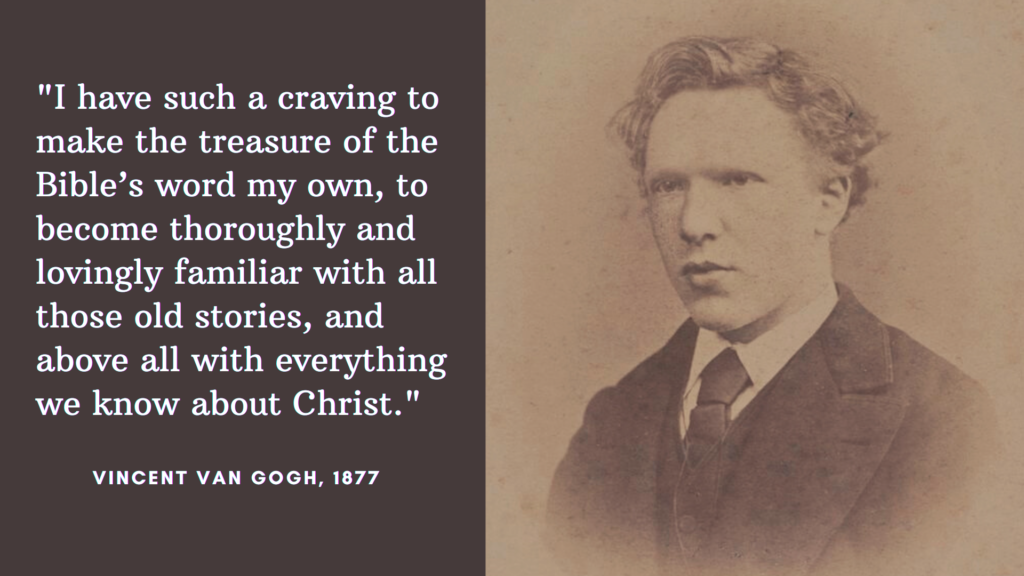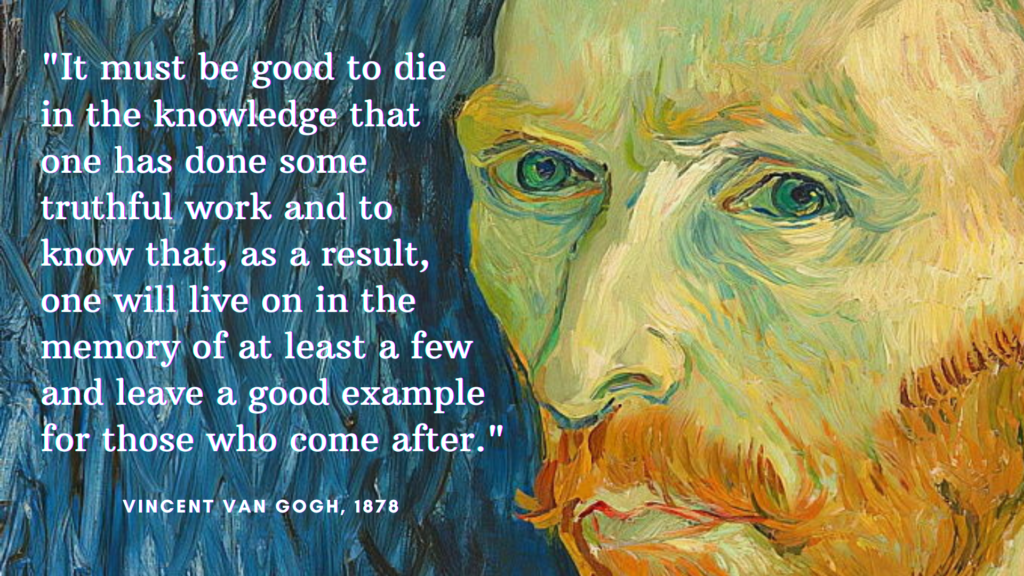The story of how Vincent van Gogh discovered his artistic vocation in Belgium
Vincent van Gogh was 23 years old when he felt the longing to serve God and become a preacher. His religious aspirations could have prevented him from becoming the great artist he was destined to be. Instead, following his heart led him to Belgium, where the story of his life as an artist would begin.

Religion and art surrounded van Gogh throughout his childhood. His father was a minister of the Dutch Reformed Church, his mother was an artist, and three of his uncles were art dealers. Having developed an inclination for both, van Gogh was bound to choose one or the other for a prospective career.
Becoming an artist was the farthest thing from van Gogh’s mind. Although he loved to draw and spent his early working years as an art dealer, van Gogh never saw himself as an artist. He considered himself to be no more than an art spectator. Becoming an evangelist was the only dream he was determined to chase.
After six years of drifting from job to job in the art trade, van Gogh took the first steps toward becoming a clergyman in 1876. His journey would eventually land him in the country that would ultimately convert him into an artist.
In Belgium, van Gogh would soon learn that the God he
wanted to serve had other plans for him.
In 1878, van Gogh went to Laeken in Brussels to attend a Flemish school for aspiring missionaries. He was supposed to study theology at the University of Amsterdam, but he failed the entrance examination. Luck wasn’t any kinder to van Gogh in Laeken. After three months of training, he was dismissed from missionary school for lacking the necessary qualifications.
Unfazed by rejection, van Gogh packed his bags and headed southwest of Belgium. He found work as a lay preacher in Wasmes, one of the poor mining villages in the Borinage. After six months, his appointment in Wasmes was discontinued. Still undeterred, van Gogh moved to the nearby village of Cuesmes and continued tending to mine workers and their families.
Art conceived in the Borinage (1879-1880)
During the industrial period, the Borinage was a thriving coal mining district in Belgium and one of the most impoverished regions of Europe. Living among the miners and witnessing the everyday burden of their circumstances affected van Gogh both spiritually and artistically.
The young pastor poured himself into his evangelical work. He gave up whatever entitlements he had as a church representative and assumed the way of life in the Borinage. But as van Gogh watched the peasants go about their daily lives, he saw and felt something that demanded artistic expression. He soon found himself picking up the pencil and drawing again after a long time.
He didn’t know it yet, but van Gogh was slowly approaching the turning point of his life. And though his creative efforts didn’t yield much output during his time in the Borinage, his humanitarian experiences shaped the artistic vision that would later define his art and anchor his work as a painter of peasant life.
Painter of peasant life (1881-1885)
In 1879, van Gogh finally gave up preaching and made up his mind to become an artist. After a brief visit to his parents in the Dutch town of Etten, van Gogh returned to the Borinage in 1880, no longer a preacher but a serious artist. His early struggles with the craft persuaded him to move to Brussels and seek some formal training. He studied art with Dutch painters Willem Roelofs and Anthon van Rappard, who were both working in Brussels. But for the most part, van Gogh learned how to paint on his own.
Van Gogh came to Belgium to become a preacher.
He came out of it an artist.
By the time he left Belgium in 1881, van Gogh had become a fully committed artist. He had at last come to his real vocation, but he would only arrive years after his lifetime.
From 1881 to 1890, van Gogh produced more than two thousand paintings and drawings but sold only a handful. His eccentricity, struggles with mental illness, and uncompromising artistic principles constantly put him at odds with an unforgiving and often hypocritical art establishment.
Van Gogh was nevertheless starting to make a name for himself during the last years of his life, but he died at the age of 37 without ever tasting any of the glory that awaited him.
Master of Post-Impressionism (1886-1890)
In 1878, the year he came to Belgium and discovered his artistic vocation, van Gogh conveyed in a letter to his brother Theo what seemed like a declaration of what he hoped to achieve at the end of his life. He mentioned neither fame nor fortune. Only the reward of knowing he made a difference, no matter how little, for having created something truthful.
He didn’t live long enough to see just how much impact he made. But those who lived to see the day can swear that van Gogh’s wish came true countless times over.
The Van Gogh legacy of bold colors, radical brushwork, and dramatic imagery heralded the birth of modern art and influenced the work of succeeding generations of artists. From then until today, he has remained a universally loved and perpetually honored master of art.




